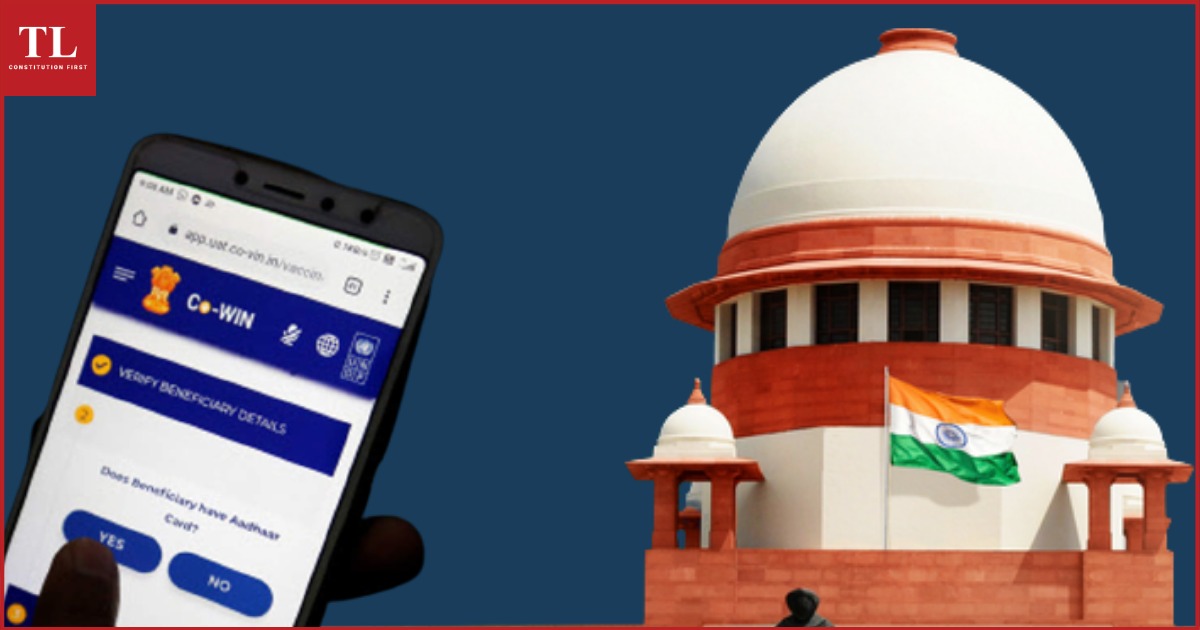THE Supreme Court has warned that the digital divide in India, particularly between the rural and urban areas could have serious implications on the fundamental right to equality and the right to health of persons within the age group of 18-44 years given the government’s vaccination policy
A three-judge bench of Justices DY Chandrachud, L Nageswara Rao and Ravindra Bhat said a policy that exclusively relies on a digital portal for vaccinating a significant population of this country between the ages of 18-44 years would be unable to meet its target of universal immunization owing to such a digital divide.
“The extent of the advances made in improving digital literacy and digital access falls short of penetrating the majority of the population in the country. Serious issues of the availability of bandwidth and connectivity pose further challenges to digital penetration. It is the marginalized sections of the society who would bear the brunt of this accessibility barrier”, the bench said.
The court referred to a survey on Household Social Consumption: Education‟ conducted by National Statistics Office (July 2017-June 2018) which revealed the that only around 4% of rural households and 23% of urban households possessed a computer. In the age group of 15-29 years, around 24% in rural households and 56% in urban areas were able to operate a computer; and only 24% of
households in the country had internet access.
Around 35% of persons in the age group of 15-29 years reported use of internet during the 30 days prior to the date of survey. The proportions were 25% in rural areas and 58% in urban areas.
It also referred to a report by the Telecom Regulatory Authority of India on Wireless Data Services in India which noted that: (i) Out of the total population of 1.3 billion, only 578 million people in India (less than 50%) had a subscription to wireless data services. The wireless tele density in rural areas was 57.13% as compared to 155.49% in urban areas as on 31 March 2019.
The Court directed the Centre to provide the following clarifications-
- It may not be feasible to require the majority of our population to rely on friends/NGOs for digital registrations over CoWIN, when even the digitally literate are finding it hard to procure vaccination slots.
- The issue of over-crowding may also arise at CSCs in rural areas where people would have to visit constantly in hope of a vaccine slot opening up.
- Certain vaccination centres may be earmarked for on-site registrations for the population aged between 18-44 years without the existing conditions prescribed in the circular dated 24 May 2021, potentially with a view to prioritize those with co-morbidities/disabilities/other socio-economic vulnerabilities. Alternatively, whether specific daily quotas may be introduced for on-site registration at each centre or specific centres.
- This policy may not allay the issue of hesitancy which may arise from approaching a State authority (such as the District Immunization Task Force) to obtain registration for the vaccination. Whether on-site registration with self- attestation of age to ensure widespread vaccination can be provided.
- The CoWIN platform and other IT applications like Aarogya Setu should be made available in regional languages. The timeline for ensuring the availability of the platform in multiple regional languages.
- Conducting a disability audit for the CoWIN website and other IT application like Aarogya Setu to ensure that they are accessible to persons with disabilities.
Besides, the court flagged the issue of non-accessibility of the CoWIN platform by persons with visual disabilities It said the website suffers from certain accessibility barriers which should be addressed. These include-
- Audio or text captcha is not available;
- The seven filters, which inter alia, include age group, name of vaccine and whether the vaccine is paid or free, are not designed accessibly. This issue can be addressed by creation of a drop-down list;
- While visually challenged persons can determine the number of available vaccine slots, one cannot find out the day those slots correspond to. This can be resolved by ensuring that table headers correspond to associated cells;
- Keyboard support for navigating the website is absent;
- Adequate time should be given to disabled users to schedule their appointment without the possibility of being automatically logged off; and
- Accessibility protocols, such as use of appropriate colour contrasts, should be adhered to.


